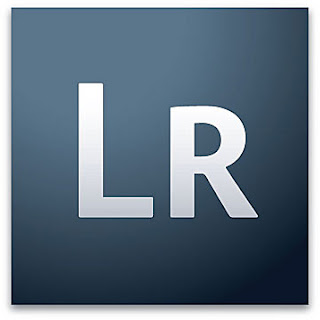
These daylight balanced fluorescent constant light sources have been a new movement in Digital Photography and will most likely advance in there capabilities along with digital cameras.
OK, so when we first bought this kit we were undoubtedly less experienced in the realm of studio lighting so we were looking for a newer alternative. These lights did exactly that.
So not really having experience with the use of constant lights (and minimal exposure to standard studio strobes) I may have just had different, perhaps unrealistic and inexperienced expectations.
So getting down to business here, we picked up a Westcott Spiderlite TD5 Trio kit to play around in our studio.
The Kit came with

2- TD5s each with 5 – 30 Watt daylight balanced fluorescent lights each
1- TD3 with 3 – 30 Watt bulbs.
2- 24x32” Soft Boxes for the TD5s
1- 12x16” Soft Box for TD3
2- 10’ Heavy Stands
1- 8’ Light stand
Rolling case (great roller blade style wheels by the way)
After using them for a while I quickly found myself interested in having more power to shoot at lower ISO’s and/or eliminate motion blur. So, I invested in the larger 50 watt daylight balances fluorescent bulbs as soon as they came out. I guess I really did not have a grasp on how much brighter they should be as I was expecting a bigger jump in power. Though they were brighter, it was not that significant in my opinion. Especially when you consider the price tag since we I bought like a dozen of them to replace most of the ones we had. Each TD5 took four of them around the diameter of the base and one smaller wattage bulb in the middle as they can’t fit anything bigger in there. The larger bulbs are pretty bulky. Again the size jump in the bulbs may have also helped in given me false expectations of a bigger jump in power.

 1/250 sec at f8, ISO 200 1/400 sec at f10, ISO 20030 watt bulbs on left 50 watt on right 30 watt bulbs on left 50 watt on right
1/250 sec at f8, ISO 200 1/400 sec at f10, ISO 20030 watt bulbs on left 50 watt on right 30 watt bulbs on left 50 watt on rightJust to give you a better idea of what I am talking about here I put them side by side in this shot (these images is completely unmodified and are basically right of the camera.) Using the same soft boxes (no baffles)on the left the standard 30 watt bulbs and on the right the larger 50 watt bulbs. Disregard the look of the exposure itself. My goal here was to show the magnitude of difference between the two at the same camera setting in the same image.

 30 watt 50 watt bulbs Both images shot at 1/80 sec at f2.8, ISO 200
30 watt 50 watt bulbs Both images shot at 1/80 sec at f2.8, ISO 200Here you can see the targets taken with same exposure settings same distance etc… Not much difference. Again, maybe I just don’t have enough of grasp on it, but in looking at the wattage numbers compared to what we got with the kit originally; I guess I expected a bigger jump.
Each TD5 has three switches on the back which allow for any combination of lights (from 1 bulb to 5) to vary the total output though I never saw a need to run any less than 5 unless you could not move a secondary/fill light back enough so you had to throttle it back. I pretty much always kept them all on all the time and just varied distance to the subject with a secondary light.
 1/40 sec at f5.6, ISO 200
1/40 sec at f5.6, ISO 200Now given the awesome advances in image quality and noise reduction (i.e. Nikons D700 and D3) this system may be more of an option then when these lights first came out.


Here are some images our friend took of use using these lights in Auto mode basically.
We kept one soft box tight to the frame on the left and the other large soft box was on the right further away as a fill. Needless to say due to power limits we always kept them close to our subjects, typically just outside the frame.
1/30 sec at f3.5, ISO 500 1/40sec at f2.8, ISO 500 1/30 sec at f3.2, ISO 500
1/30 sec at f3.2, ISO 500At these settings, obviously, you can see how easy it is to capture that look of implied motion (wanted or unwanted). Not alot of room tom move without jacking the ISO up.
Bottom line is we took some great images with these lights and including these shots of us that we use on our website still to this day. So do they work? Absolutley they do. The question you need to ask yourself is are they right for your applications? I think we just quickly outgrew them as we tend to shoot too wide a variety of subjects and situations.
Some pros and consOn the Pro side:
We love shooting at large apertures, so these were a no brainier. No light meter required. You can pretty much nail the exposure down with the cameras built in light meter. Lighting set-up is essentially WYSWYG.
It is a lot easier to imply motion in an image (if you like to play with that look) with these lights verses normal studio strobes. Lights run pretty cool for their output. A hobbiest or amature could snag a set of these lights and (with some portrait lighting basics) be shooting nice pics in a couple of hours without a lightmeter.
On the Con side:
Due to the slower speeds you are shooting at, I would forget toddlers for the most part (with a few exceptions). Infants worked out OK. If you don’t have a descent digital chip in your camera, you will have noticeable image quality loss if you are shooting higher ISO which you are almost bound to if you are trying to get your shutter speed up. Not a lot of room to move on the camera settings as you may be ISO and aperture bound trying to stay at or below ISO 400. Had a couple of bulbs burn out quickly (at least so, don’t recall dropping any while they were hot). Also on a couple of the bulbs, the little plastic housing at the base popped open the leaving the bulb and wires hanging from the screw in base (again I don’t recall any major studio accidents that would have caused this. I would say so if I did). This is an issue with the bulb manufacturer not Westcott, though they should be made aware of it.
If you are going in for a new kit, I would opt for the larger bulbs right out of the gate, as you can always throttle down.
Read more on the this product line
on the Westcott site here.






























